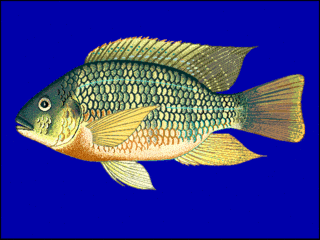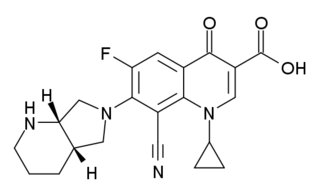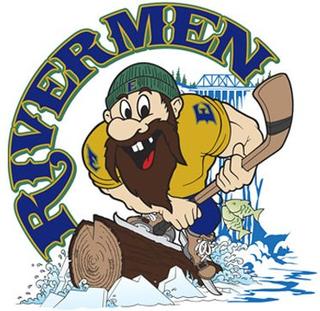Related Research Articles

Patrick Dhane Lanshaw, better known by his stage name Lil Wyte, is an American rapper. He is a member of the rap collective Hypnotize Minds and owner of the independent label Wyte Music.
Thiobacillus is a genus of Gram-negative Betaproteobacteria. Thiobacillus thioparus is the type species of the genus, and the type strain thereof is the StarkeyT strain, isolated by Robert Starkey in the 1930s from a field at Rutgers University in the United States of America. While over 30 "species" have been named in this genus since it was defined by Martinus Beijerinck in 1904,, most names were never validly or effectively published. The remainder were either reclassified into Paracoccus, Starkeya ; Sulfuriferula, Annwoodia, Thiomonas ; Halothiobacillus, Guyparkeria, or Thermithiobacillus or Acidithiobacillus. The very loosely defined "species" Thiobacillus trautweinii was where sulfur oxidising heterotrophs and chemolithoheterotrophs were assigned in the 1910-1960s era, most of which were probably Pseudomonas species. Many species named in this genus were never deposited in service collections and have been lost.
In epizoology, an epizootic is a disease event in a nonhuman animal population analogous to an epidemic in humans. An epizootic may be restricted to a specific locale, general, or widespread ("panzootic"). High population density is a major contributing factor to epizootics. Aquaculture is an industry sometimes plagued by disease because of the large number of fish confined to a small area.

Tilapia has become the third most important fish in aquaculture after carp and salmon; worldwide production exceeded 1.5 million metric tons in 2002 and increases annually. Because of their high protein content, large size, rapid growth, and palatability, a number of coptodonine and oreochromine cichlids—specifically, various species of Coptodon, Oreochromis, and Sarotherodon—are the focus of major aquaculture efforts.

Human mortality from H5N1 or the human fatality ratio from H5N1 or the case-fatality rate of H5N1 is the ratio of the number of confirmed human deaths resulting from confirmed cases of transmission and infection of H5N1 to the number of those confirmed cases. For example, if there are 100 confirmed cases of humans infected with H5N1 and 10 die, then there is a 10% human fatality ratio. H5N1 flu is a concern due to the global spread of H5N1 that constitutes a pandemic threat. The majority of H5N1 flu cases have been reported in southeast and east Asia. The case-fatality rate is central to pandemic planning. Estimates of case-fatality (CF) rates for past influenza pandemics have ranged from to 2-3% for the 1918 pandemic to about 0.6% for the 1957 pandemic to 0.2% for the 1968 pandemic. As of 2008, the official World Health Organization estimate for the case-fatality rate for the outbreak of H5N1 avian influenza was approximately 60%. Public health officials in Ontario, Canada argue that the true case-fatality rate could be lower, pointing to studies suggesting it could be 0-1%, but warned that it was unlikely to be as low as the 0.1–0.4% rate that was built into many pandemic plans.

Pradofloxacin is a 3rd generation enhanced spectrum veterinary antibiotic of the fluoroquinolone class. It was developed by Bayer HealthCare AG, Animal Health GmbH, and received approval from the European Commission in April 2011 for prescription-only use in veterinary medicine for the treatment of bacterial infections in dogs and cats.
Visa requirements for British Nationals (Overseas) are administrative entry restrictions by the authorities of other states and territories placed on British National (Overseas) passport holders. Several million people, the vast majority with a Hong Kong connection, hold this passport.

Malawian cannabis, particularly the strain known as Malawi Gold, is internationally renowned as one of the finest sativa strains from Africa. According to a World Bank report it is among "the best and finest" marijuana strains in the world, generally regarded as one of the most potent psychoactive pure African sativas. The popularity of this variety has led to such a profound increase in marijuana tourism and economic profit in Malawi that Malawi Gold is listed as one of the three "Big C's" in Malawian exports: chambo, chombe (tea), and chamba (cannabis).
Escherichia coli O104:H4 is an enteroaggregative Escherichia coli strain of the bacterium Escherichia coli, and the cause of the 2011 Escherichia coli O104:H4 outbreak. The "O" in the serological classification identifies the cell wall lipopolysaccharide antigen, and the "H" identifies the flagella antigen.

Rifalazil is an antibiotic substance that kills bacterial cells by blocking off the β-subunit in RNA polymerase. Rifalazil is used as treatments for many different diseases. Of the most common are Chlamydia infection, Clostridium difficile associated diarrhea (CDAD), and tuberculosis (TB). Using rifalazil and the effects that coincide with taking rifalazil for treating a bacterial disease vary from person to person, as does any drug put into the human body. Food interactions and genetic variation are a few causes for the variation in side effects from the use of rifalazil. Its development was terminated in 2013 due to severe side effects.
Thiomonas is a genus of Gram-negative, non-spore-forming bacteria from the family of Comamonadaceae.
Thiomonas arsenitoxydans is a Gram-negative, moderately acidophilic, non-spore-forming, rod-shaped, motile bacterium from the genus Thiomonas, which has the ability to use arsenite as an energy source by oxidizing it.
Thiomonas bhubaneswarensis is a Gram-negative, oxidase- and catalase-positive, strictly aerobic, moderately thermophilic non-spore-forming, rod-shaped, motile bacterium with a single polar flagellum from the genus Thiomonas, which was isolated from hot-spring sediment samples in Atri in Bhubaneswar. T. bhubaneswarensis has the ability to oxidize thiosulfate.
Thiomonas cuprina is an As(III)-oxidizing bacterium from the genus Thiomonas. It is proposed to be reclassified, along with Thiomonas arsenivorans, as strains of Thiomonas delicata.
Thiomonas delicata is an As(III)-oxidizing, nonmotile bacterium from the genus Thiomonas. Colonies of T. delicata are whitish-yellow in color.
Thiomonas intermedia is a Gram-negative, aerobic, moderately acidophilic bacterium from the genus Thiomonas, which has the ability to oxidise sulfur compounds. Thiomonas intermedia was isolated from an sewage pipe in Hamburg.
Thiomonas islandica is a Gram-negative, rod-shaped, motile bacterium from the genus Thiomonas, which has the ability to oxidise sulfur compounds and hydrogen. It was isolated from a hot spring in Graendalur in southwestern Iceland.
Thiomonas thermosulfata is a Gram-negative, non-spore-forming bacterium from the genus Thiomonas.

The Espanola Rivermen were a Canadian junior ice hockey franchise based in Espanola, Ontario, Canada. They were founded as a part of the Northern Ontario Junior Hockey League, but joined the Canadian International Hockey League after one season.

Society for Experimental Mechanics (SEM) is a professional organization for engineers and scientists studying the design and implementation of experiments to characterize materials, structures, and systems. Formed in 1943 as the Society for Experimental Stress Analysis (SESA), early work focused on methods such as photoelasticity and strain gages. Society historical records refer to the society as SESA through the 1984 Fall SESA meeting in Milwaukee, WI and start referring the society as SEM with the 1985 Spring SEM meeting in Las Vegas, NV. The society has expanded to include topics including modal analysis, digital image correlation, Split Hopkinson pressure bar, Residual stress, and biomaterials.
References
- ↑ LPSN
- ↑ http://www.straininfo.net/strains/22188 [ dead link ]
- ↑ "Archived copy". Archived from the original on 2016-03-04. Retrieved 2013-05-31.
{{cite web}}: CS1 maint: archived copy as title (link)